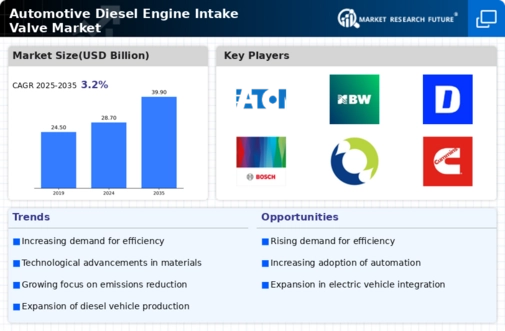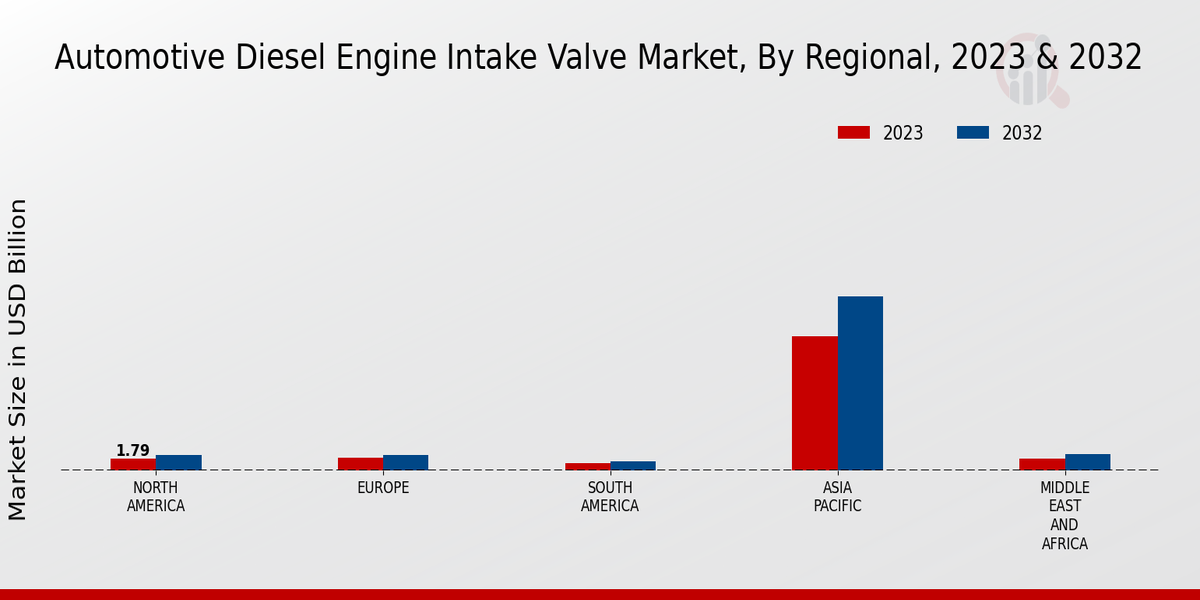Automotive Diesel Engine Intake Valve Market Summary
The Global Automotive Diesel Engine Intake Valve Market is projected to grow from 28.72 USD Billion in 2024 to 39.85 USD Billion by 2035.
Key Market Trends & Highlights
Automotive Diesel Engine Intake Valve Key Trends and Highlights
- The market is expected to experience a compound annual growth rate (CAGR) of 3.04% from 2025 to 2035.
- By 2035, the market valuation is anticipated to reach 39.9 USD Billion, indicating robust growth potential.
- in 2024, the market is valued at 28.72 USD Billion, reflecting a solid foundation for future expansion.
- Growing adoption of advanced engine technologies due to increasing fuel efficiency regulations is a major market driver.
Market Size & Forecast
| 2024 Market Size | 28.72 (USD Billion) |
| 2035 Market Size | 39.85 (USD Billion) |
| CAGR (2025-2035) | 3.02% |
Major Players
Eaton Corporation, BorgWarner, Delphi Technologies, Bosch, TI Automotive, Cummins, Hyundai Mobis, Siemens AG, Continental AG, Denso Corporation, Mitsubishi Electric Corporation, Pierburg GmbH, FEV Group, Furukawa Electric Co., Ltd., Mahle





















Leave a Comment